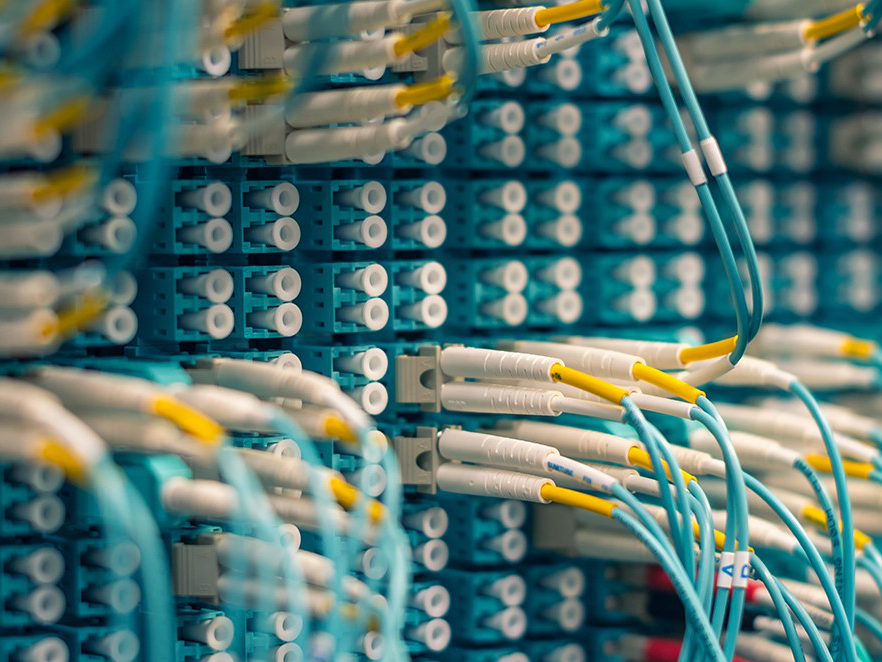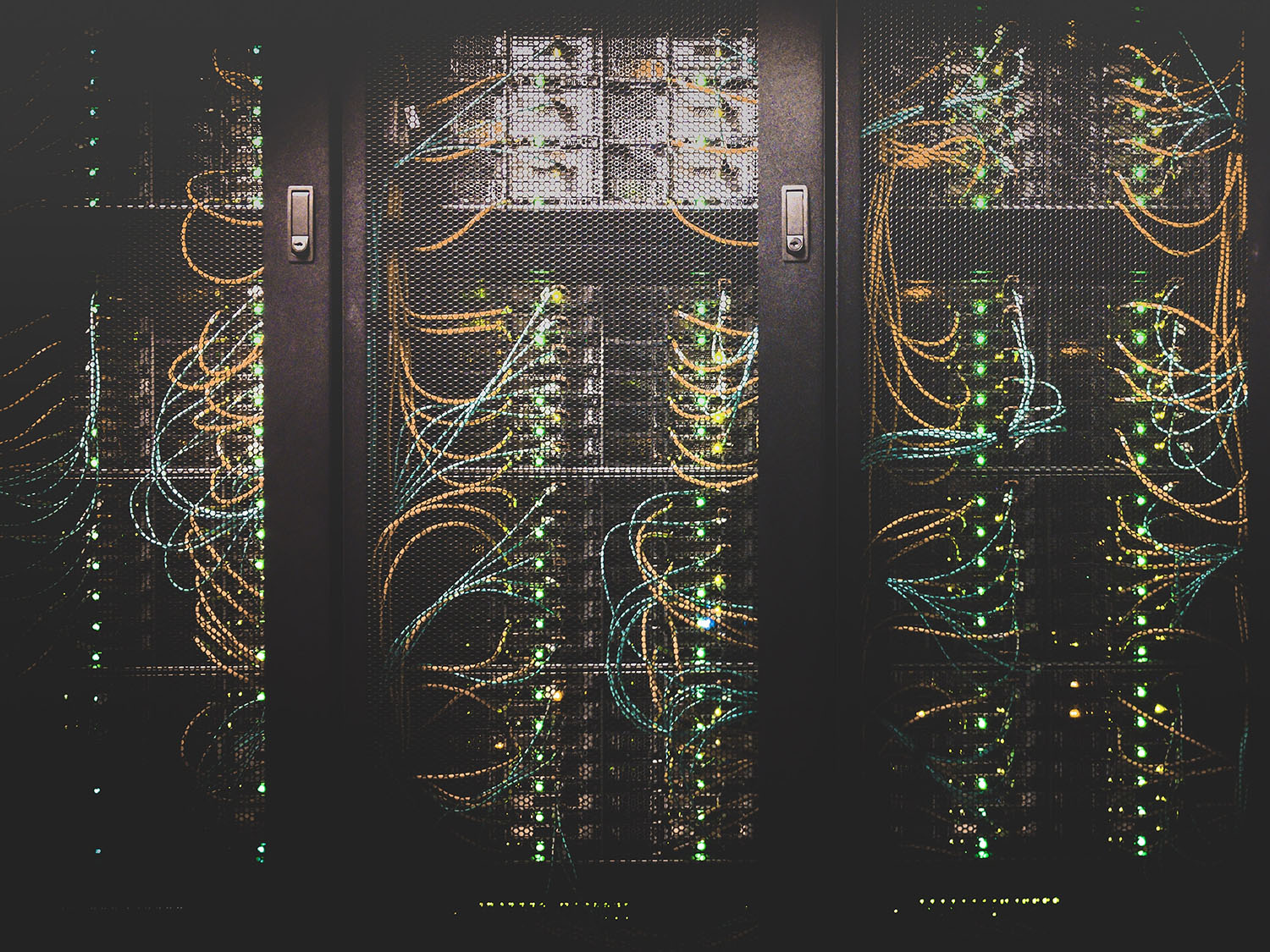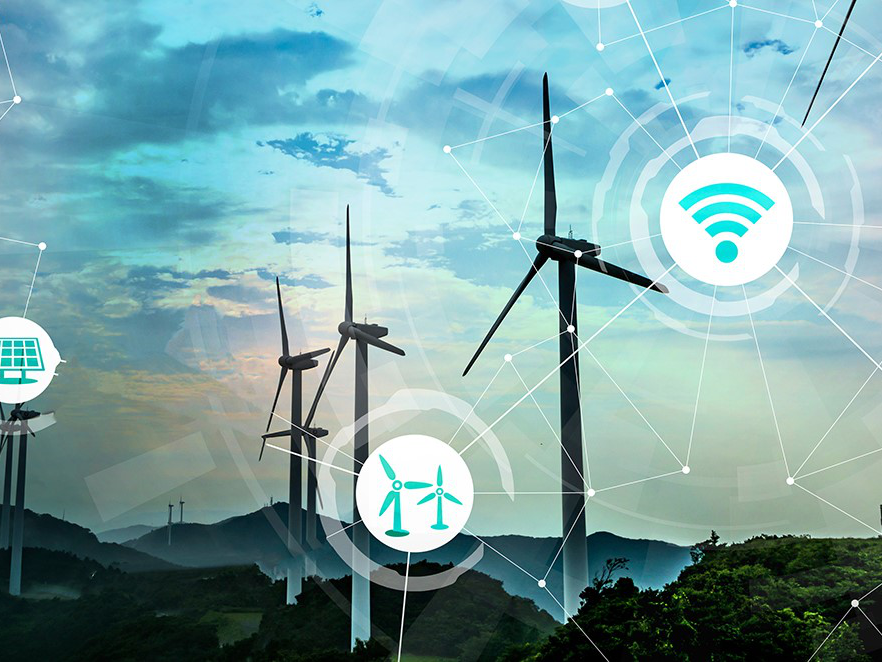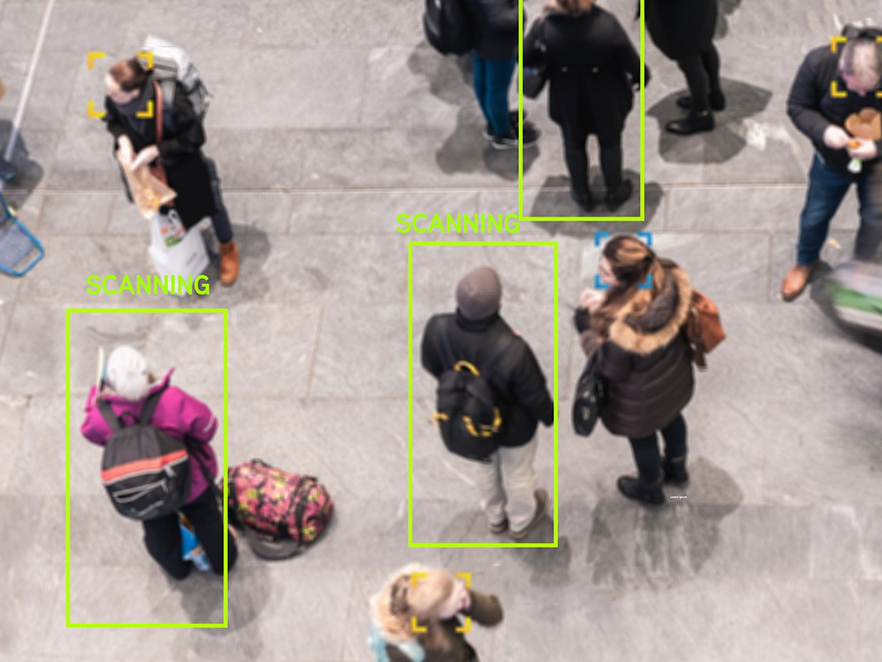The Digital Revolution is characterised by the manipulation of data. At the heart of this massive and accelerating exchange of data is the data centre, the “brain” of the internet, where data is captured, computed, and stored. Electricity is central to this process such that data centre capacity is expressed in MWs.
The explosion in data centre traffic has attracted attention to the question of its impact on energy demand. In this piece, we seek to shed light on 1) how important is power supply to data centres, 2) the importance of data centres to global power demand, and 3) whether data centres hinder or enable the energy transition.
Importance of power supply to data centres
A data centre is a physical facility that offers space to host the infrastructure (building, servers, backup power supply, cooling, bandwidth, security, etc.) that houses critical applications and data. The core components are network infrastructure, storage infrastructure and computing resources – all of which are powered by electricity. In addition, these processes generate heat, which needs to be removed by cooling equipment that is also powered by electricity (the extent to which power is used to cool the data centre largely determines Power Usage Efficiency (PUE) metric – more on that below).
From a capex perspective, electricity equipment represents up to 50% of hard costs and 30% of total development cost. This power equipment includes generators, Uninterruptable Power Supply (UPS) systems and rechargeable batteries that are used to maximise reliability.
Arguably more relevant, though, up to 65% of the cash operating expenses of running a data centre are electricity and power equipment related. Actis has recently announced the construction of a 21MW IT load data centre in South Korea in which it will invest nearly $100m in power equipment and expects to pay over $30m per annum in power and power equipment related costs during its operations phase. This is a real example of two core Actis capabilities-in power and real estate combining knowledge.
No surprise then that from a data centre development perspective, the procurement of stable and redundant power supplies is a key success factor (alongside the right physical location and enabling the right ecosystem within the facility). From a value proposition and returns perspective, power procurement cost competitiveness is crucial.
Importance of data centres to global power demand
Data centre IP traffic is expected to grow exponentially during the next phase of the Digital Revolution: in the immediate term cloud computing, characterised by computing processes and data storage migrated to the cloud as opposed to devices (which requires a lot of data flowing around) and, in the near future, artificial intelligence, internet of things, virtual reality, autonomous vehicles and blockchain, all of which require massive amount of data creation, processing and storage. From 2010 to 2018 data centre IP traffic increased 6-fold. HSBC estimates that between 2017 and 2030 it will increase another 19-fold.
If data centres use a lot of power and their use has grown exponentially, so has power demand by this sector… right? Interestingly, this has not been the case in the last decade, when the 6-fold increase in data centre IP traffic between 2010 and 2018 has corresponded with a 6% total increase of power demand by this sector over that period. Efficiency improvements in core IT components and the shift away from small, inefficient facilities towards large cloud and hyperscale data centres are to blame.
PUE – the ratio of total power use by IT equipment – in large data facilities has dropped from 2.5 in 2007 to an industry average of around 1.6, with the very best hyperscale data can have PUE values of around 1.1 (meaning 0.1 kWh used for cooling/power provision for every 1 kWh used for IT equipment). Actis has a data centre under construction in China in which different design measures were adopted to target a 1.19 PUE.
The key question is whether this technology evolution will be sufficient to keep up with data centre growth. The IEA projects that while data centre demand will increase by 60% through 2022, if the trajectory of efficiency gains in IT components and data centre infrastructure continues, data centre power consumption can remain constant through that period.
Some caution that longer term power demand will inevitably increase on the argument that Moore’s law – the doubling of processing capacity and 50% reduction in its cost every 1.5 years – will tend to break eventually. Also, after all, the PUE can never be below 1.HSBC estimates that by 2030 total power demand by data centres will increase 9x, and cautions about consequential strains on global energy systems.
A 2018 article in Nature estimates that the sectors power demand could increase by “only” 5x or less, to 1,100TWh or around 2.5% of global electricity consumption. This is a matter of debate, as others argue that these projections fail to consider continued efficiency gains.
A first element to contextualise this question is that while data centres are facilities with high concentration of power consumption, they serve as outsourcing replacement for IT processing needs that would have otherwise been done internally by corporations. Also, cloud computing saves the overall energy to be utilised by IT equipment, drives more efficient use of computer resources, saves office spaces and as more human activities goes online, there is an overall more efficient use of resources, including energy, compared to offline activities.
In terms of power demand by the data centre industry, while the rate of growth is uncertain, it is clear it is already a large carbon emitter. However, the journey that data centres have gone through lays out important lessons for other industries, namely: scale, energy efficiency and, importantly, adoption of renewable energy.
Actis has witnessed first-hand the muscle of efficiency derived from scale via our activities in the power sector. Our first wind farm in Latin America (also the region’s first utility scale wind farm), PESRL in Costa Rica, used 410kW turbines in a facility with a total capacity of 24MW.
Our latest wind farm in Brazil utilises 4.2MW turbines – 10x the capacity per turbine vs.PESRL’s.In Mexico, we built what is today the largest operational windfarm in Latin America at 424MW. This facility sells power at a 50% discount to that first investment in Costa Rica. On the data centre side, AWS estimates that hyperscale data centres require only 16% of the power as compared to on-premises infrastructure, which reduces carbon footprint by 88%. Sometimes bigger is better.
We also know that the cleanest (and cheapest!) kW is that which is not wasted – energy efficiency. In our power distribution businesses, loss reduction is a key element of our value creation toolkit. In Umeme, a power distribution business in Uganda, annual network losses decreased from 34.7% in 2009 to 19.5% in 2015. The data centre industry has also focused on energy efficiency, by applying new technologies. Google developed an artificial intelligence algorithm that monitors data generated by sensors within a data centre to optimise the cooling configurations, reducing power usage by 15%.
Ultimately, though, the data centre industry will continue to require massive amounts of power: an equivalent of more than 300GW of new plants by 2030. The good news is that information and communications technology (ICT) companies have become major players in anchoring new renewable capacity. The declining cost of renewable energy supports a robust economic argument, while it allows the offtaker to hedge its power cost from price volatility via long term, fixed price PPAs – something that fossil fuel generation cannot provide.
Across the globe, adoption of renewables by data centre operations has gone mainstream. According to the IEA, ICT companies accounted for about half of global corporate renewables procurement in the past five years.
This charge has been led precisely by data centre operators. In 2018, Google procured 10TWh of renewable power to match 100% of their data centre energy consumption: this is equivalent to the total electricity consumption of Guatemala, with a population of 17 million. AWS has committed to procure 100% of their power needs from renewables by 2025. For renewables developers, these offtakers, with their huge demand requirements, corporate commitment to renewables and credit profile, represent an ideal commercialisation path to anchor new projects. After all, Microsoft, which sourced half of its electricity from renewables in 2018, is one of only two corporations in the US to boast a AAA credit rating – higher than the US government itself!
Conclusion
The world’s appetite for data has increased exponentially over the past decade and is expected to accelerate further with the advent of new technologies – artificial intelligence, virtual reality, autonomous vehicles, and the internet of things.Data centres are a key component of this digital ecosystem that is powered by electricity. Electricity is most important component of a data centre cost structure and is a key development success factor. Operators that excel at power procurement will have an edge as will Real Estate developers with in-house expertise in this area such as Actis.
From a macro perspective, data centres account for 1% of global consumption. While efficiency gains in operations have mitigated any increase in total power demand in the past decade, it is projected that the share of global power consumption could increase towards 2.5% plus by 2030.
While this increase could pose challenges and strains to the global energy system, the industry has relevant lessons for others on the energy transition journey: scale, energy efficiency and the adoption of renewable energy have come together to power the data centre in a smart, sustainable way. Stakeholders should take note to keep and build on this promising path.







